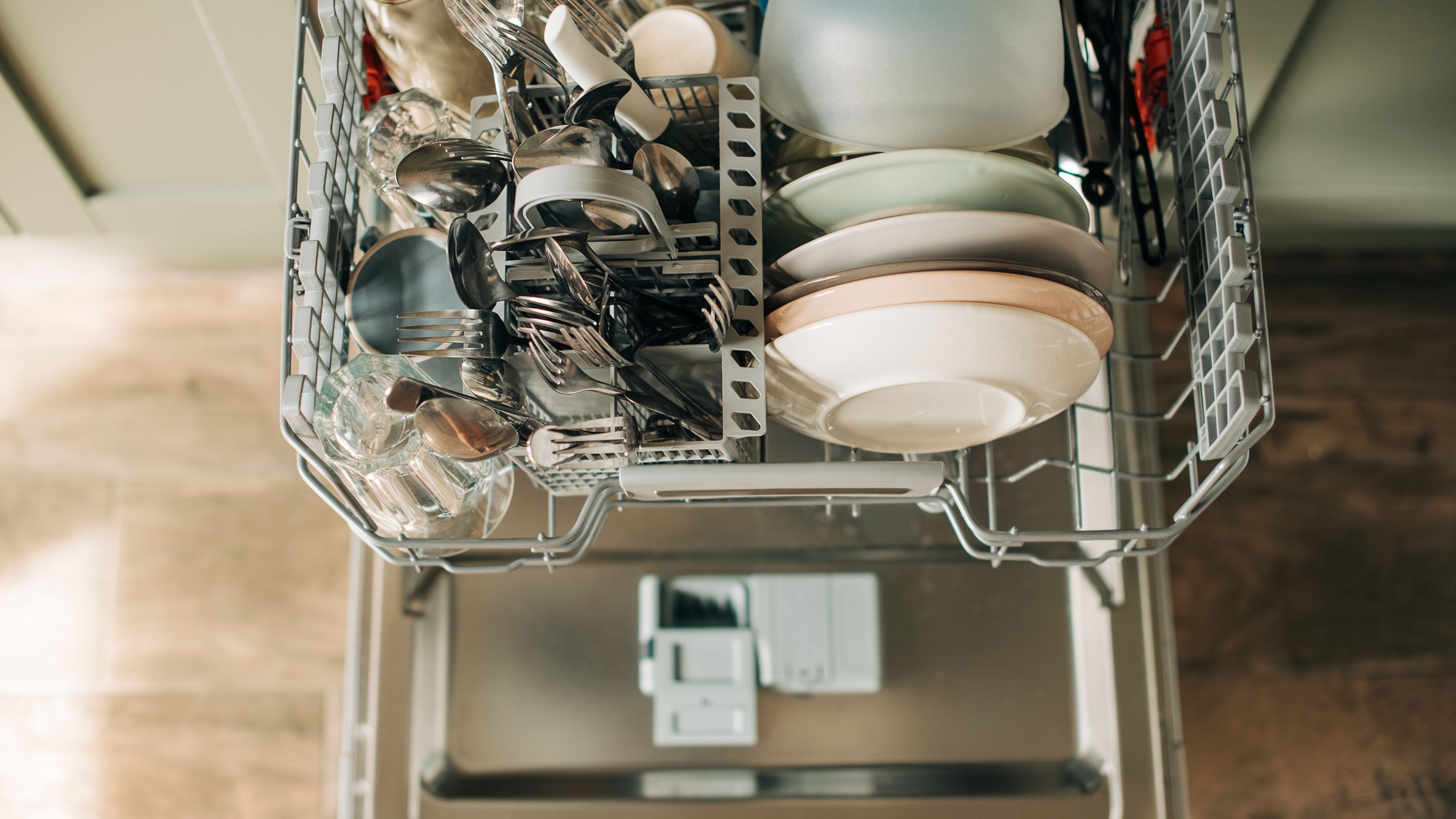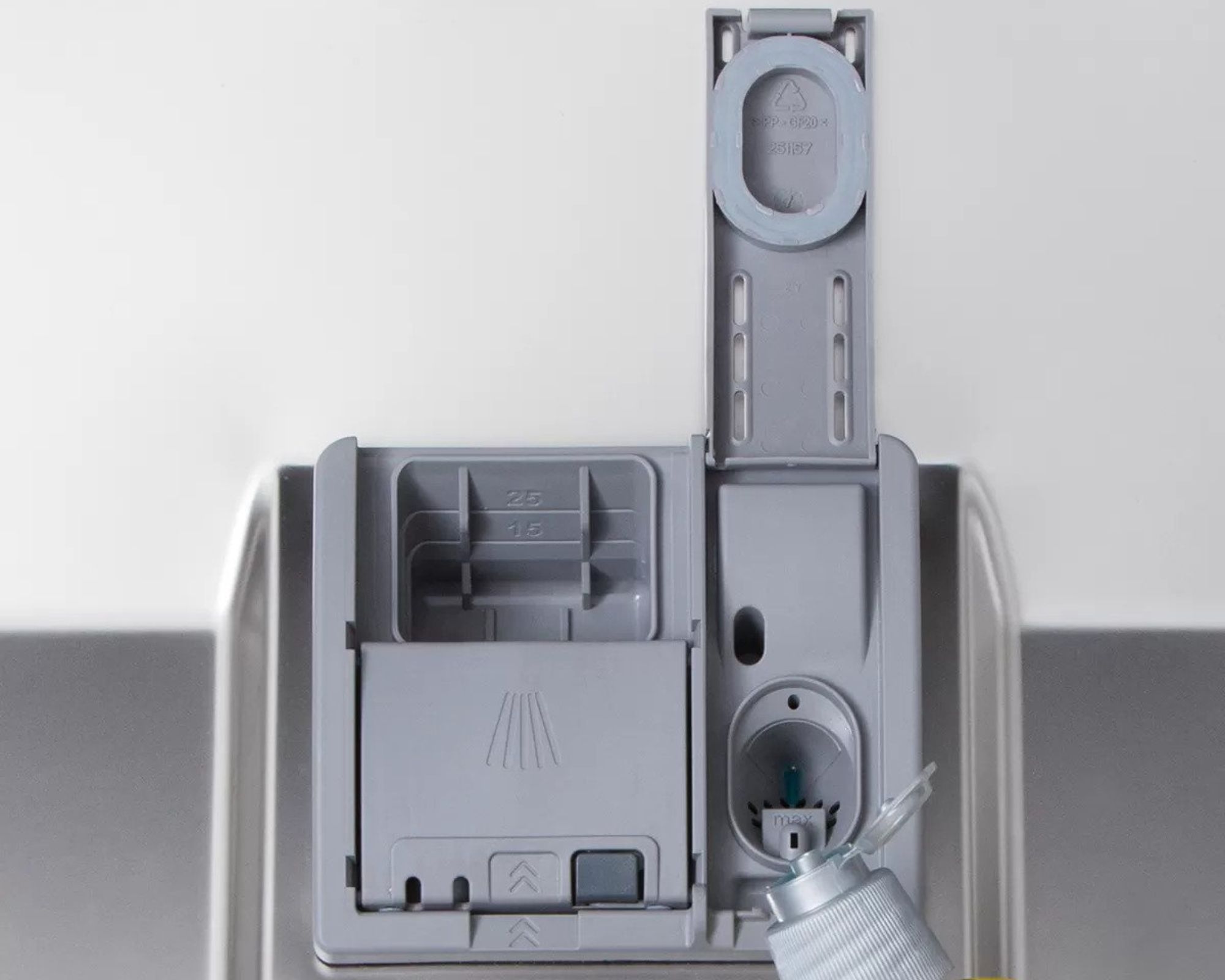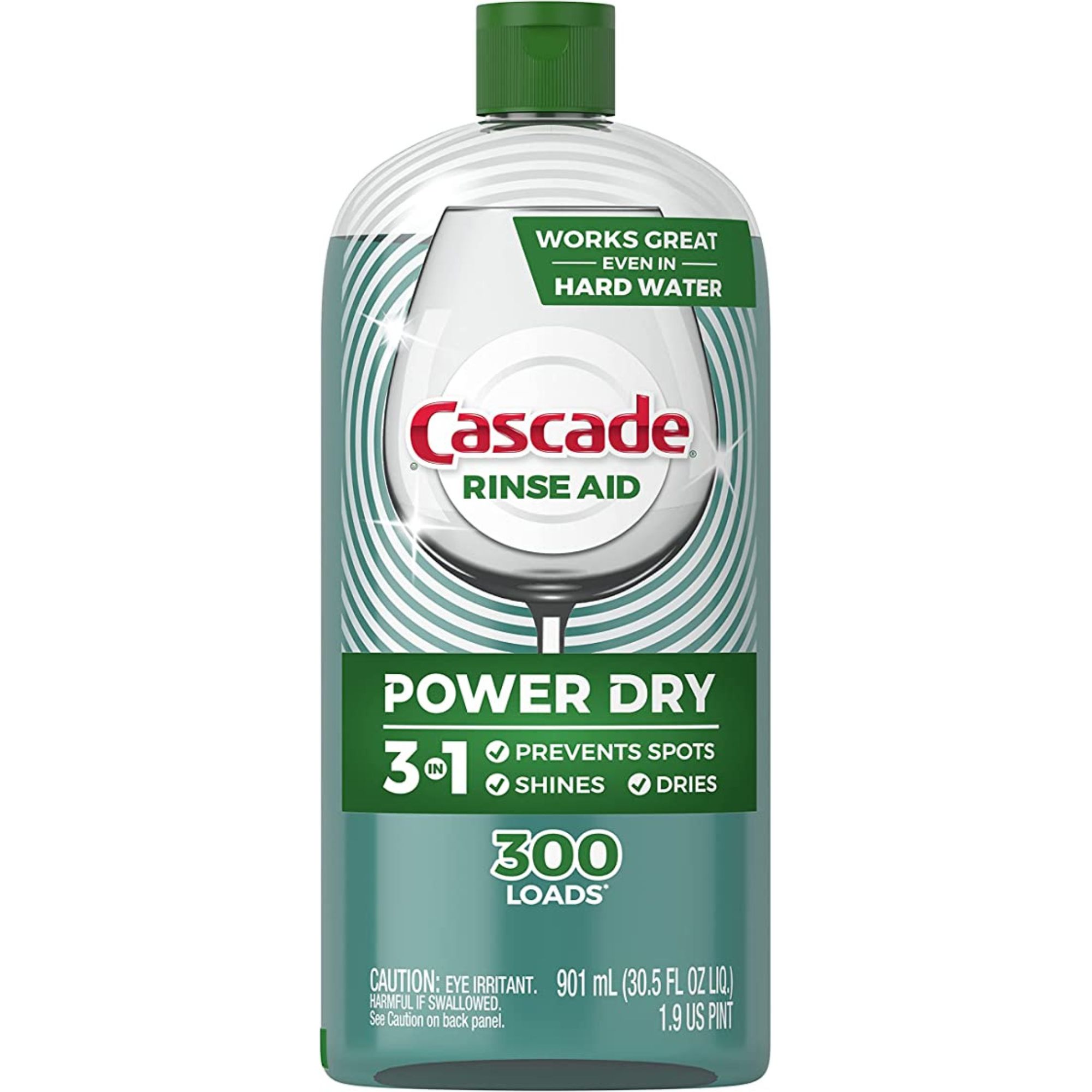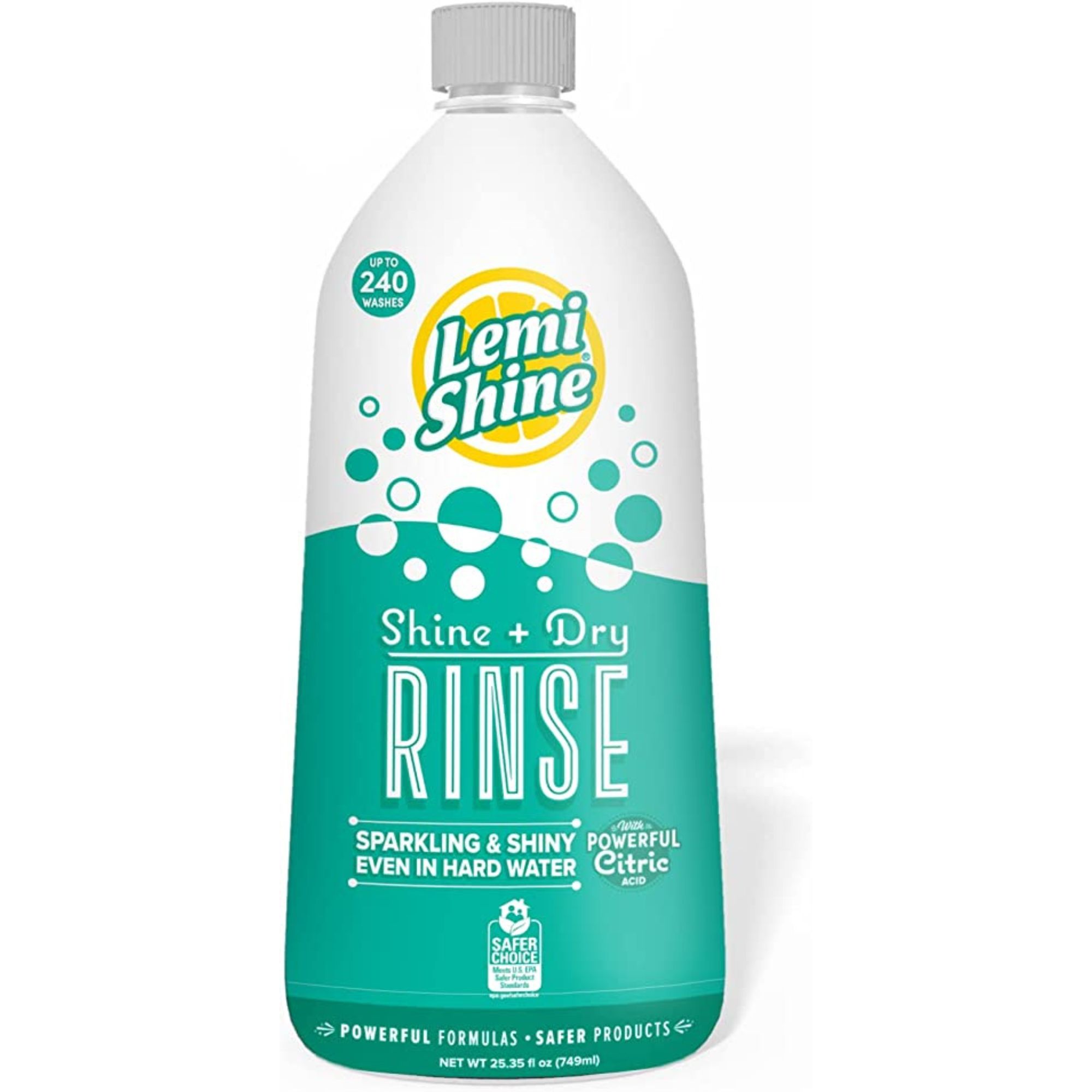
Seen it on the shelves, but still asking yourself: "what is dishwasher rinse aid?" You're not alone. Surely using dishwasher tablets and selecting a program should be enough, right?
Sorry to break it to you sis — but no. If your dishwasher isn't drying properly, or you're constantly rewashing dishes because of streaks, let me be the first to say that this liquid could be the solution to all your problems (no pun intended).
So before you save up your pretty pennies for a new dishwasher (or call your a pro/landlord/parents), lemme save you from taking the L and explain all about this cheap and effective cleaning product. ICYDK — I'm nearing my mid-thirties and have only recently started using it, so I thought I'd reach out to experts at Bosch and Smeg to back me up.
What is dishwasher rinse aid?
"Rinse aid is a surfactant, which means it lowers the surface tension of water, allowing it to more easily slide off dishes in the dishwasher," explains Lucy Bye, Group Marketing Manager, Bosch.
Why should you use dishwasher rinse aid?
"It's especially useful in hard water areas, where rinse aid helps prevent water spots from forming on dishes such as glasses, plates, and cutlery. Additionally, rinse aid helps dishes dry faster," says Bye.
Of course, you could try using a water-softening product like a this dishwasher salt from Amazon. "Salt is required to protect your machine from limescale and assists with the water softening process within the machine," Anna Batten, product manager, Smeg explains. "Rinse aid assists the drying of the crockery meaning your crockery is spot and streak free."
When to avoid using dishwasher rinse aid
Sometimes, if you go OTT on dishwasher rinse aid, you might notice rainbow streaks on your dishes and utensils. If this is the case, change your dishwasher's rinse aid settings so it dumps a little less into the cycle. You can do this by following the instructions in your user manual.
Where to use dishwasher rinse aid

"The dishwasher door has a rinse aid dispenser located next to where the detergent is placed. This dispenser must be manually filled, and it releases the liquid at the appropriate time and temperature for each program," says Bye.
How to use dishwasher rinse aid
Here's what you'll need
- A dishwasher rinse aid of your choice — Finish Jet-Dry is highly rated on Amazon
- A clean lint-free microfiber cloth — I, (and 65,000 others) swear by these Amazon Basic ones
- Open the rinse aid dispenser
- Pour rinse aid solution, filling up to the "max" line (do not overfill the dispenser).
- Close the lid, making sure you hear it click.
- Wipe up any excess using a clean, lint-free microfiber cloth.
How often should I refill the dishwasher rinse aid?
"When the rinse-aid refill light appears on the dishwasher control panel," advises Bye.
What happens if you don't use dishwasher rinse aid?
"Not using rinse aid decreases the drying performance of your dishwasher. It might also leave water spots on your dishes, especially if you have hard water," says Bye.
However, if you live in a soft water area, using dishwasher tabs alone should be sufficient.
How do I set the amount of rinse aid?
"Bosch dishwashers are preset to level 2. If you notice streaks or water marks on your dishes, you can adjust the settings on your dishwasher by following the instructions in the user manual," confirms Bye.
Our pick of the best dishwasher rinse aids to use

The best rinse aid
Volume (fl oz): 23
With over 35,000 reviews on Amazon, this premium rinse aid will help to dry your dishes so you can get back to serving up meals without having to have a dish towel on hand.

The best rinse aid for hard water areas
Volume (fl oz): 30.5
If you're after the #1 recommended brand in North America — it's got to be Cascade! This 3-in-1 product prevents spots, creates shine and dries your pots, pans, and plates, and leaves them smelling fresh too!

The best eco-friendly rinse aid
Volume (fl oz): 25
This all-natural product uses lemon to clean your dishes, ensuring spot-free glasses and cutlery, whether it's for caszh dining or formal dinner parties. It's all-natural, biodegradable, and phosphate-free if you tend to pick eco-friendly cleaning products.







